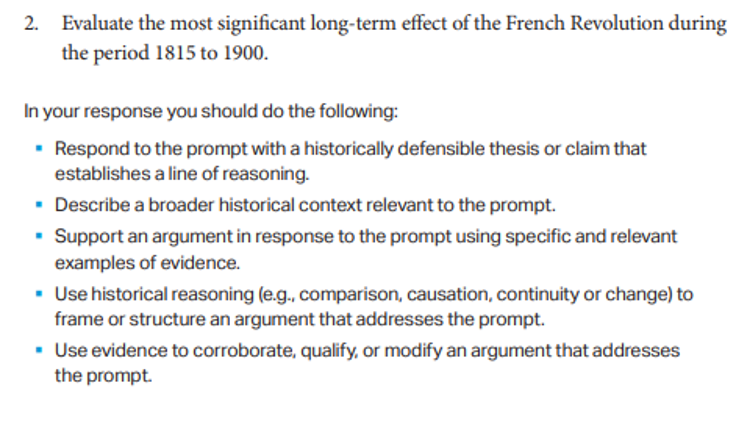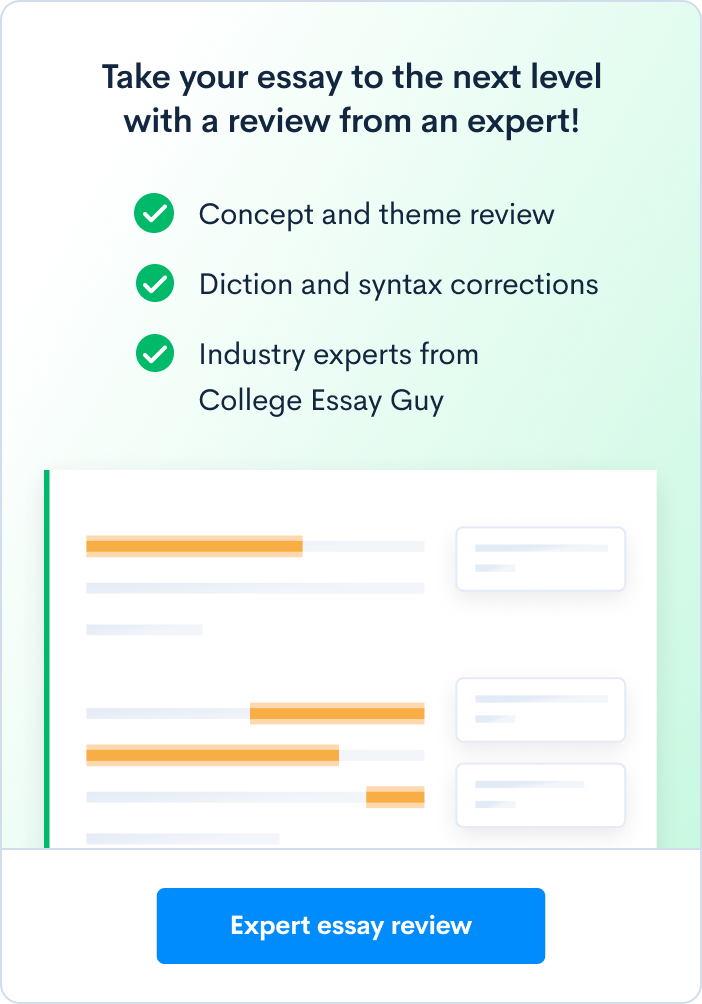Ultimate Guide to the AP European History Exam
The AP European History exam is one of the hardest and least-common AP exams taken. In 2019, only about 100,000 of the more than 5 million students taking AP exams took the AP European History exam. Only 11.7% of those AP Euro test-takers scored a 5. If you’re planning to take the AP European History exam—whether you have taken the class or self-studied—read on for a breakdown of the test and CollegeVine’s advice for how to best prepare for it. The 2020 AP European History exam takes place on Wednesday, May 6, 2020 at 12 pm. For a comprehensive list of dates and times for all of the 2020 AP exams, check out our blog post 2020 AP Exam Schedule: Everything You Need to Know. The AP European History course investigates the content of European history for significant events, individuals, developments, and processes in four historical periods. In this class, you’ll develop your ability to analyze historical data, assess historical evidence, and analyze significant issues in European history. The course content focuses on events from 1450 to the present and provides seven themes for framing connections over time and between places: In 2015, the AP European History course was redesigned. Though the course content remains largely the same, it is now more focused towards clear learning objectives for the exam. The exam itself has also changed. Starting with the 2016 test, there are now fewer long essays and multiple-choice questions, and short-answer questions were added for the first time. It is important to remember when preparing for the exam to use material produced in 2015 or later, as older material will be outdated. The AP European History course consists of nine units, covering the cultural, economic, political, and social developments that have shaped Europe from 1450 through the present. Below is a look at how the units break down and what percentage of the exam they represent. The AP European History exam is one of the longer AP exams, clocking in at three hours and 15 minutes. It is comprised of the following parts: Section 1: Multiple Choice 55 minutes | 55 questions | 40% of score Section 1 takes 55 minutes, contains 55 multiple-choice questions, and accounts for 40% of your total score. Questions generally come in sets of three or four based on the same stimulus, and include one or more sources such as text, images, charts, and maps. Section 2: Short-Answer Questions 40 minutes | 3 questions | 20% of score Section 2 contains three short-answer questions, takes 40 minutes, and accounts for 20% of your total score. In their short answers, students are tasked with analyzing the sources along with the developments described in them, then putting those occurrences in context and making connections between them. Section 3: Free Response 1 hour 40 minutes | 2 questions | 40% of score The last section features two free-response questions—one is a document-based question (DBQ) which you have an hour to answer and is worth 25% of your score, the other is a long essay that you’re given 40 minutes to write and is worth 15% of your score. Document-Based Question: The document-based question is focused on a historical development that happened between 1600 and 2001. Test takers are presented with seven documents giving various perspectives on the event and are tasked with constructing an argument using the documents AND prior knowledge to form and support an argument. Long Essay: Test takers are given the choice of three questions, all of them assessing the ability to develop and support arguments based on evidence, but focusing on different historical time periods. The three time periods are: 1450 to 1700, 1648 to 1914, and 1815 to 2001. The AP European History exam is a tough one to master, though many students do well enough to pass (score of 3 or higher). In 2019, 58.1% of students who took the AP European History exam received a score of 3 or higher. Of these, only 11.7% of students received the top score of 5 with another 20.5% scoring a 4. Roughly a quarter (25.9%) of all test-takers received a score of 3, contributing greatly to the exam’s pass rate. About a third (29.2%) of students received a score of 2, while 12.5% of test-takers scored a 1 on the exam. If you’re curious about other score distributions, see our post Easiest and Hardest AP Exams. Keep in mind that policies regarding credit and advanced standing based on AP scores vary widely from college to college. Be sure to check whether the schools on your list accept AP exam credit, and if so, what scores they require. Take a practice test to assess your initial knowledge of the material. The College Board AP European History website provides a number of sample test questions and exam tips, and it also has a practice AP European History exam available. There are numerous other free practice tests offered on the web; for example, Varsity Tutors has a multitude of free AP European History Diagnostic Tests on their website. High School Test Prep also hosts a handful of free AP European History tests on their website. The AP European History exam tests your knowledge of significant events, individuals, developments, and processes in European history in four historical periods from 1450 to present. Learn to Think Like a Historian: You’ll need to learn the thinking skills and methods used by historians to study the past. These include analyzing primary and secondary sources, making historical comparisons, chronological reasoning, and argumentation. Go to the Source: The College Board provides a series of useful videos that give an overview of curricular framework and exam format. You should also review the College Board’s Exam Tips. Ask an Expert: For a more specific idea of where to focus your studying, you should consider using an updated formal study guide. Both the Princeton Review’s Cracking the AP European History Exam, 2020 Edition: Proven Techniques to Help You Score a 5 and Barron’s AP European History, 8th Edition are effective and popular resources. Of these, Barron’s is regarded as the stronger option for long-term studying of the material, while the Princeton Review is often regarded as a better option for test practice (though some users say that its practice tests in the past have been more difficult than the actual AP exam). There are also a number of free study resources available online. Many AP teachers have posted complete study guides—such as this AP European History study guide from Mrs. Newmark, a teacher at the Raleigh Charter High School in Raleigh, North Carolina—review sheets, and test questions. Try using a study app: Finally, another convenient way to study is to use one of the recently-developed apps for AP exams. These can be free or cost a small fee, and are an easy way to quiz yourself on-the-go. Make sure you read reviews before choosing one—their quality varies widely. Varsity Tutors also offers a free app to help you study for the AP Euro exam. Once you have your theory down, test it out by practicing multiple-choice questions. You can find these in most study guides or through online searches. You could also try taking the multiple-choice section of another practice exam. The College Board Course Description includes many practice multiple-choice questions along with explanations of their answers. There are also many practice questions available in any commercial study guide. As you go through these, try to keep track of which areas are still tripping you up, and go back over this theory again. Focus on understanding what each question is asking and keep a running list of any concepts that are still unfamiliar. The AP European History exam is different from many AP exams in that it consists of five free-response questions of varying length and content. To be successful in these sections, you should know what to expect from each question. If you are already familiar with the free-response portions of the AP U.S. History or AP World History exams, you will find these similar in format. Short Answer: The first four free-response questions are considered “short answer” and you will be allowed 40 minutes to complete them all. These questions tend to have multiple parts, with each being very specific and limited in scope. In this section, you will have an opportunity to explain the historical examples you know best. You will probably be asked to interpret a graph or figure, compare and contrast the effects of different cultural approaches from specific time periods, or list distinct precipitating factors of significant historical events. You should be able to answer each part of these questions in a short, succinct paragraph. Document-Based Question: The second free-response section is a document-based question and you will have one hour to complete it. This one question alone is worth 25% of your total exam score. To master it, you need to carefully read the question, practice active reading skills while reviewing the documents, and make a strong outline before you begin to write. In this section, you will assess written, quantitative, or visual materials as historical evidence. Be sure to completely review the outline of requirements provided before the prompt, and check them off as you are outlining and writing your response. Long Essay: The last free-response section is a long-essay response, which you will have 40 minutes to complete. It is worth 15% of your total exam score. This section gives you the choice of three separate prompts—remember that you only need to answer one of them! As in the document-based question above, you will be provided with a rough outline of key considerations for the scoring of your work. These include a strong thesis, application of your historical thinking skills, ability to support your argument with specific examples, and the synthesis of your response into a greater historical context. You will be asked to explain and analyze significant issues in world history and develop an argument supported by your analysis of historical evidence. As you complete the document-based question and long essay, make sure to keep an eye on the time. Though you will be reminded of time remaining by the exam proctor, you will not be forced to move on to another question once the amount of time recommended for the first question has passed. Make sure you stay on track to address each section of every question. No points can be awarded for answer sections left completely blank when time runs out. For a more in-depth explanation of how the document-based section and long-essay section are scored, review the College Board’s scoring rubric. To read descriptions of the directives commonly found on this section, visit the Common Directives page. To see authentic examples of past student responses and scoring explanations for each, visit the College Board’s Student Samples, Scoring Guidelines, and Commentary. As you did at the very beginning of your studying, take a practice test to evaluate your progress. You should see a steady progression of knowledge, and it’s likely that you will see patterns identifying which areas have improved the most and which areas still need improvement. If you have time, repeat each of the steps above to incrementally increase your score. If you’re taking the AP course associated with this exam, your teacher will walk you through how to register. If you’re self-studying, check out our blog post How to Self-Register for AP Exams. For information about what to bring to the exam, see our post What Should I Bring to My AP Exam (And What Should I Definitely Leave at Home)? History enthusiasts will love CollegeVine’s free chancing engine. We use past performance (grades, standardized test scores, and extracurricular activities) to predict future outcomes—in this case, your chance of acceptance into college. Try our chancing engine today to see your odds of getting into over 500 colleges and universities. Looking for more information on AP exams and courses? If so, check out these other excellent posts: When is the AP European History Exam?
What Does the AP European History Exam Cover?
AP European History Exam Course Content
AP European History Unit
Topics You May Cover
Percentage of Exam Score
Renaissance and Exploration
Exploration of the changes the Renaissance sparked and their legacy through colonialism and a commercial revolution that changed the shape of European society.
10%-15%
Age of Reformation
Chart the evolving strains of Christianity in Europe and the far-reaching effects of the Reformation on daily and political life.
10%-15%
Absolutism and Constitutionalism
Developments in political power and how they affected the relationships among states and between states and individuals. Also covered are the social, political, and cultural conditions resulting from economic developments in Europe.
10%-15%
Scientific, Philosophical, and Political Developments
How scientific thinking and new strains of political thought combined with technological advances to transform 18th century life in Europe.
10%-15%
Conflict, Crisis, and Reaction in the Late 18th Century
England’s growing role in European matters and the reverberations of the French Revolution across Europe.
10%-15%
Industrialization and its Effects
The transformational effects of the Industrial Revolution, technology, and urbanization on European society and political thought.
10%-15%
19th Century Perspectives and Political Developments
How the political forces of nationalism and shifting alliances set the stage for World War I.
10%-15%
20th Century Global Conflicts
The great upheavals of the 20th century, as well as cultural developments and changing political structures.
10%-15%
Cold War and Contemporary Europe
How competing ideologies and global superpowers came to define much of the latter half of the 20th century.
10%-15%
AP European History Exam Content
Section
Number of Questions
Time
Percentage of Score
Multiple Choice
55
55 minutes
40%
Short Answer
3
40 minutes
20%
Document Based
1
1 hour
25%
Long Essay
1 (choice between three questions)
40 minutes
15%



 AP European History Score Distribution, Average Score, and Passing Rate
AP European History Score Distribution, Average Score, and Passing Rate
Exam
5
4
3
2
1
AP European History
11.7%
20.5%
25.9%
29.2%
12.5%
Best Ways to Study for the AP European History Exam
Step 1: Assess Your Skills
Step 2: Study the Material
Step 3: Practice Multiple-Choice Questions
Step 4: Practice Free-Response Questions
Step 5: Take Another Practice Test
Step 6: Exam Day Specifics





